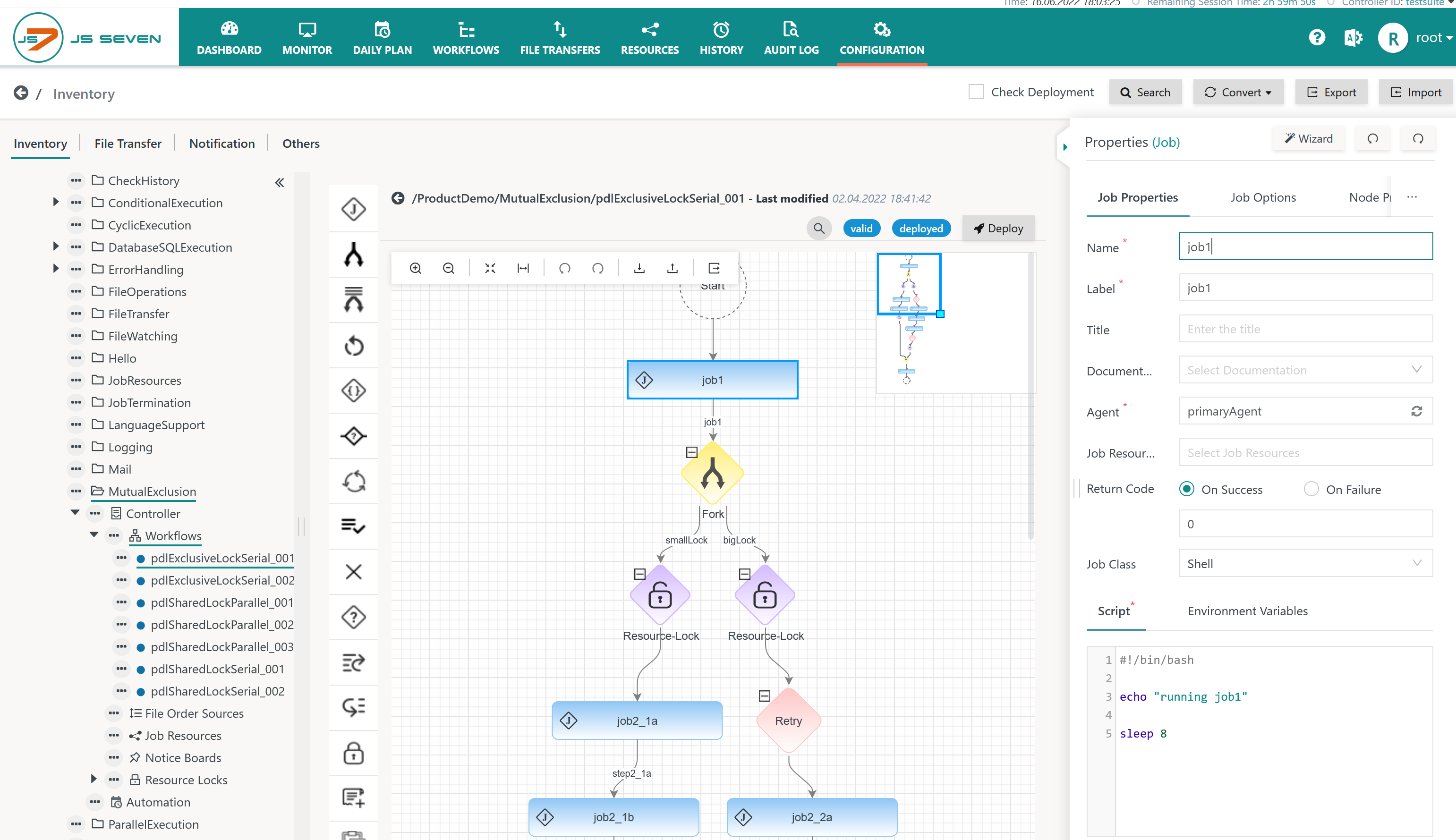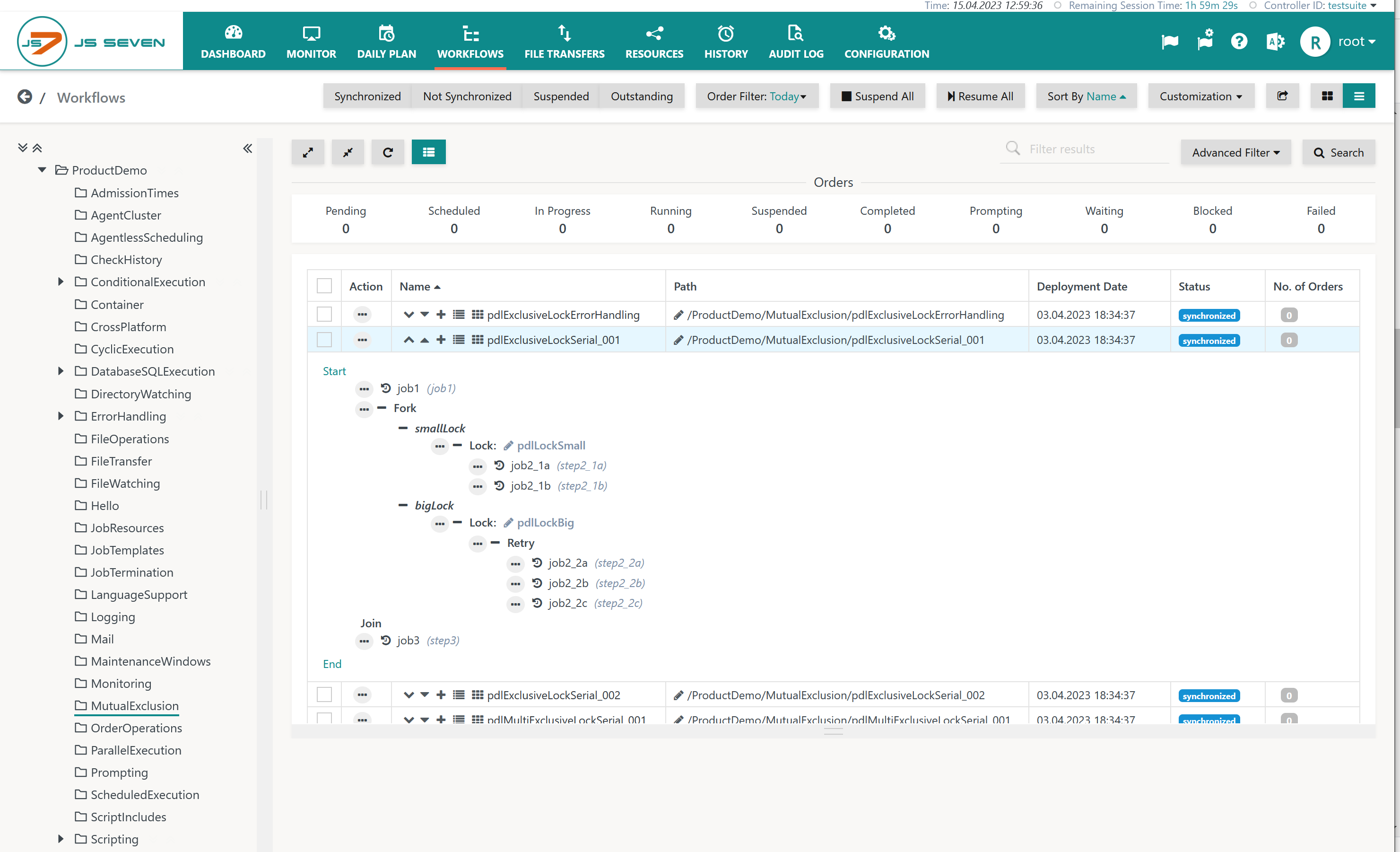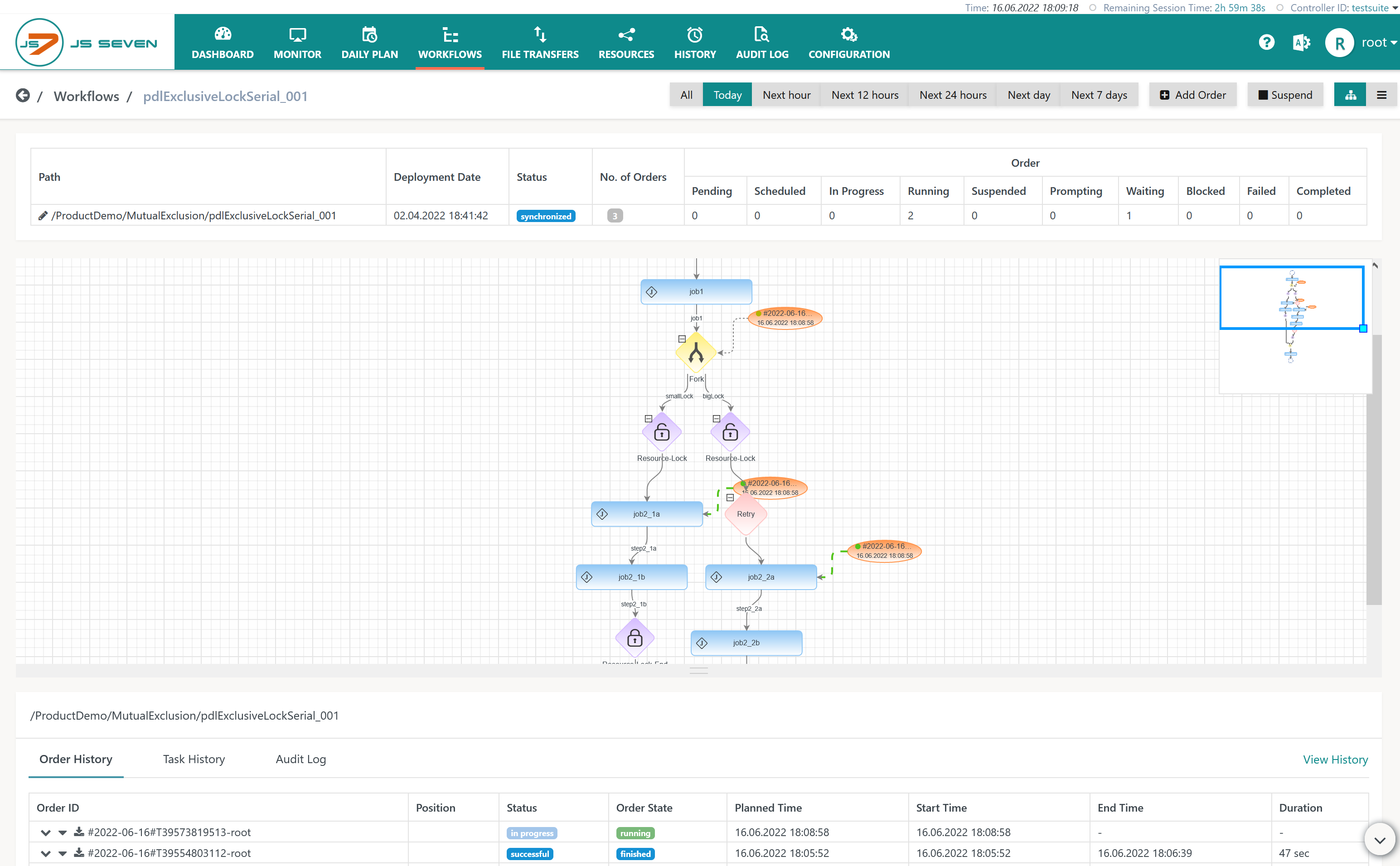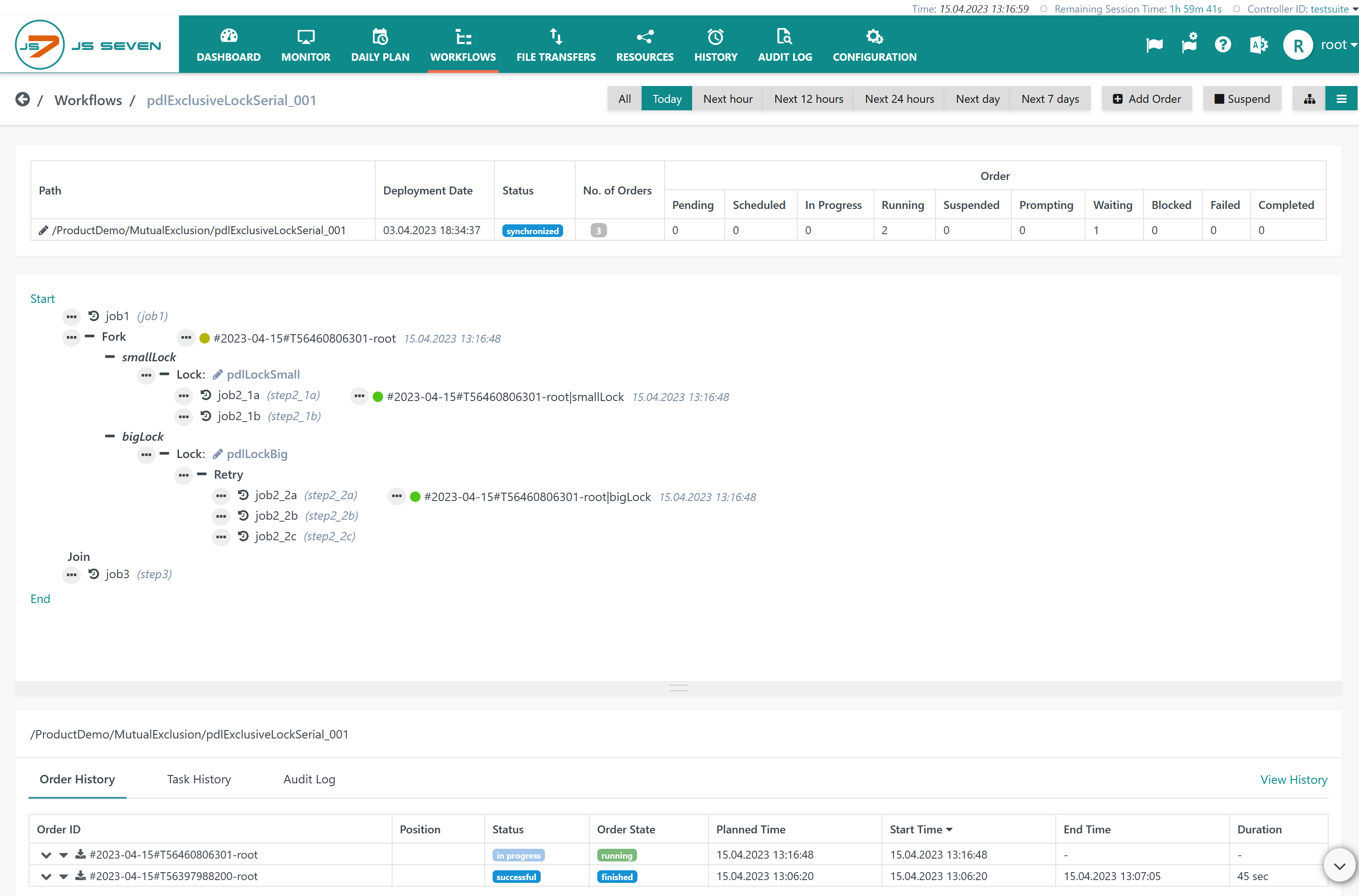Introduction
Workflows implement jobs and dependencies for workload automation. Orders are triggers that cause the execution of workflows.
- The Configuration View offers a graphical design view from the JS7 - Workflow Editor.
- The Workflows View offers a tactical view that can be used to monitor the processing of orders with workflows in near real-time and perform interventions if required.
Workflows can be started
- automatically
- by JS7 - Schedules,
- by JS7 - File Watching,
- by other workflows using the JS7 - AddOrder Instruction.
- manually
- by users adding orders from the JOC Cockpit GUI.
- programmatically
- by external applications using the JS7 - REST Web Service API,
- by external applications using the JS7 - PowerShell Module.
Workflows can be suspended to prevent execution of jobs and they can be resumed:
FEATURE AVAILABILITY STARTING FROM RELEASE 2.4.0
Configuration View for Workflows
The Configuration View is available from the main menu item of the same name.
- This view has the following panels:
- Left panel: The tree allows navigation to folders and objects. Workflows can be available in any folder from the sub-folder Workflows.
- Middle panel: The design view allows JS7 - Workflow Instructions to be copied from the tool panel to a workflow by drag & drop.
- Right panel: The property editor allows management of instruction properties such as the jobs that are available with a workflow.
- For details of how to design workflows see the JS7 - Workflow Editor.
Execution Views for Workflows
The Workflows View offers a tactical approach to Workflows and Orders:
- Operations on Workflows include:
- filtering workflows by name.
- searching for workflows.
- Operations on Orders include:
- filtering orders by date.
- monitoring orders: The JOC Cockpit GUI is updated regularly to display orders moving through the steps of a workflow.
- controlling orders: The view allows, for example, cancelling, suspending and resuming orders.
- adding orders: The view allows orders to be added for immediate or later execution.
The Workflows View is available from the main menu item of the same name:
Explanation:
- Each row in the right panel displays a number of action shortcuts:
- and icons allows display of nodes in a workflow to be expanded and collapsed.
- icon allows allows an order to be added for immediate or later execution.
- icon allows navigation of the Tabular View of the workflow.
- icon allows navigation of the Graphical View of the workflow.
- In addition, the icon opens action menu, which also contains the above actions.
Graphical View
The graphical view displays JS7 - Workflow Instructions and patterns used, for example, in forking.
- Running orders can be monitored as they pass along the instructions of the workflow.
- New orders can be added.
Explanation:
- The graphical view shows the workflow instructions and any orders. Orders are shown at their current position and state in the workflow.
- Depending on the order state, operations are available in the order's action menu for cancelling, suspending and resuming orders.
- The lower part of the screen shot shows the execution history and provides access to order and task logs.
Tabular View
The tabular view offers concise display of workflow instructions with similar actions as the graphical view:
- Running orders can be monitored as they pass along the instructions of the workflow.
- New orders can be added.
Explanation:
- The tabular view shows the instructions for the selected workflow and any orders that are currently being processed by this workflow.
- Depending on the order state operations are available in the order's action menu for cancelling, suspending and resuming orders.
- The lower part of the screenshot shows the execution history and provides access to order logs and task logs.
Filter Operations on Workflows
The Workflows view allows filtering of workflows by use of the following buttons:
- Synchronized: Displays workflows that have been deployed to a Controller and Agent. Such workflows are considered in sync between inventory and Controller.
- Not Synchronized: Displays workflows that are not available with a Controller as they have not been deployed or have been revoked. No orders can be added such workflows.
- Suspended: Displays workflows in the suspended or suspending status.
Status Operations on Workflows
Status Operations are available individually per workflow and are available as bulk operations when users select a number of workflows in the Workflows view.
Suspend
The operation to suspend a workflow includes that
- orders running in the workflow will be frozen after they complete their current processing step.
- This implies that orders are not cancelled and running tasks for jobs are not killed.
- orders scheduled for execution of the workflow that reach their start time while the workflow is suspended will wait until the workflow is resumed.
- orders that are added to the workflow for execution at a point in time while the workflow is suspended will wait until the workflow is resumed.
- This applies to orders added from the Workflows view.
- This applies to file orders added from JS7 - File Watching.
The Suspend operation is available from a workflow's action menu:
As a result of this operation the workflow will switch to the suspended status:
- The orange status button indicates suspension.
- Orders running in the workflow switch to the in Progress state to indicate that they are frozen.
The operation to suspend a workflow can include a number of Agents:
- Should different Agents be used in a workflow and should one of them not be available then the workflow remains in the suspending status until all Agents confirm suspension.
- If orders are added to a suspending workflow with an unavailable Agent then they switch to the blocked state.
- Orders in the in Progress or blocked state will be continued when the workflow is resumed.
Resume
For a suspended workflow the Resume operation is available from its action menu.
With the workflow being resumed orders waiting in the workflow in the in Progress or blocked state will continue.
Further Resources
Pages
Navigation




